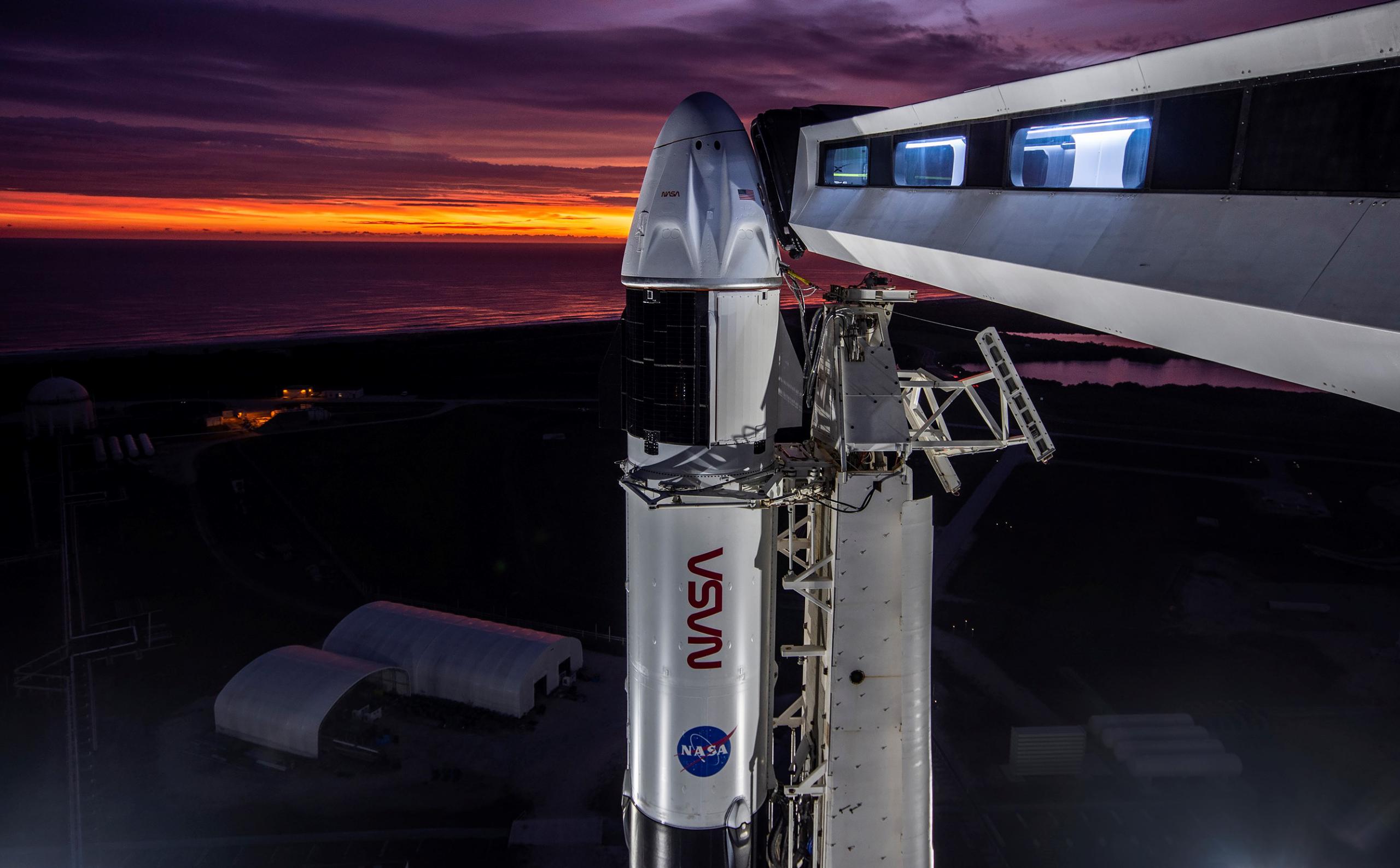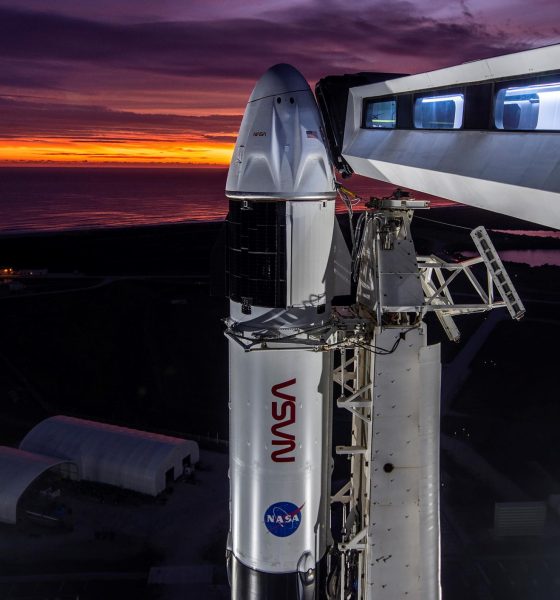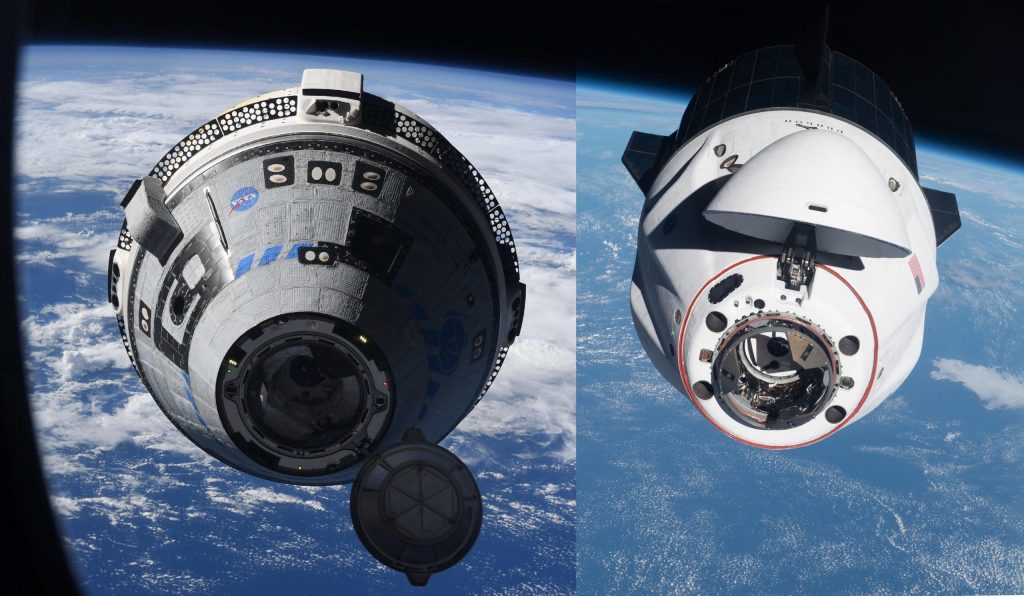

News
SpaceX’s NASA Crew Dragon launch manifest doubles in three months
NASA says it will soon award SpaceX another five Crew Dragon astronaut transport contracts after purchasing three extra missions from the company on February 28th.
That June 1st announcement means that NASA has more than doubled the number of operational Crew Dragon astronaut launches planned between 2020 to the end of 2030 in the last three months – a decision that represents another major SpaceX upset over Boeing. In reality, NASA has simply made some cold and rational calculations about its two Commercial Crew providers and – with no ill intent – made far-reaching decisions to preemptively secure its astronauts’ access to the International Space Station (ISS) for the rest of this decade. Intentional or not, however, the optics of those decisions speak volumes.
When NASA awarded Boeing and SpaceX their original $4.2 billion and $2.6 billion Commercial Crew Transportation Capability (CCtCap) contracts in 2014, the agency’s goal (or hope) was for both providers to complete the development of their Starliner and Crew Dragon spacecraft in roughly the same amount of time. Boeing and SpaceX would have then taken turns, each performing one six-month crew transportation mission per year and ensuring redundant access to the ISS for the rest of its life.
More realistically, the general assumption was that Boeing – an ancient aerospace company with half a century of spaceflight experience – would smoothly complete Starliner while SpaceX – a 12-year-old startup – would struggle to push Crew Dragon across the finish line. Of course, exactly the opposite proved to be true. For what would ultimately become (to NASA) $3.15 billion to Boeing’s $4.95 billion and development and test flight costs of $1.2 billion to Boeing’s $2.2 billion, SpaceX completed its first successful uncrewed and crewed Crew Dragon test flights in March 2019 and May 2020. In contrast, Boeing’s first uncrewed Starliner launch attempt nearly ended in catastrophe in December 2019. A second July 2021 attempt at that mission was prevented from launching by unrelated technical difficulties. Only on May 25th, 2022 did Boeing finally complete the equivalent of Crew Dragon’s March 2019 Demo-1 test flight.
NASA’s February 28th purchase of three more SpaceX Crew Dragon missions was unsurprising. The future of Starliner was still unclear and the Dragon missions it was purchasing could be needed as early as 2023 if Boeing’s spacecraft was not ready in time. The timing of NASA’s notice of intent to purchase another five Crew Dragon missions one week after the end of Boeing’s mostly successful OFT-2 test flight, however, is somewhat surprising. Instead of throwing Boeing a bone after its long-awaited success and somewhat balancing the scales between its two Commercial Crew providers, NASA has ultimately decided to purchase more than twice as many crew missions from SpaceX.
Following NASA and SpaceX’s successful Crew-4 launch last month, the space agency needs 16 more six-month transport missions from SpaceX and Boeing to ensure astronaut access to the ISS between now and late 2030. NASA has issued its intent to perform up to 14 operational Crew Dragon missions and up to 6 Starliner missions (via Boeing’s original contract). Subtracting the 4 missions SpaceX has completed or is in the midst of completing, NASA will soon have all the contracts it needs to crew the ISS until the end of 2030 without purchasing a single extra mission from Boeing.

As a result, barring surprises, SpaceX will likely be responsible for launching 70% of all NASA and ESA astronauts from late 2020 to the end of 2030, while Boeing will be tasked with carrying the remaining 30%. A less likely Commercial Crew outcome would have been hard to imagine in 2014.

Elon Musk
Elon Musk’s xAI closes upsized $20B Series E funding round
xAI announced the investment round in a post on its official website.

xAI has closed an upsized $20 billion Series E funding round, exceeding the initial $15 billion target to fuel rapid infrastructure scaling and AI product development.
xAI announced the investment round in a post on its official website.
A $20 billion Series E round
As noted by the artificial intelligence startup in its post, the Series E funding round attracted a diverse group of investors, including Valor Equity Partners, Stepstone Group, Fidelity Management & Research Company, Qatar Investment Authority, MGX, and Baron Capital Group, among others.
Strategic partners NVIDIA and Cisco Investments also continued support for building the world’s largest GPU clusters.
As xAI stated, “This financing will accelerate our world-leading infrastructure buildout, enable the rapid development and deployment of transformative AI products reaching billions of users, and fuel groundbreaking research advancing xAI’s core mission: Understanding the Universe.”
xAI’s core mission
Th Series E funding builds on xAI’s previous rounds, powering Grok advancements and massive compute expansions like the Memphis supercluster. The upsized demand reflects growing recognition of xAI’s potential in frontier AI.
xAI also highlighted several of its breakthroughs in 2025, from the buildout of Colossus I and II, which ended with over 1 million H100 GPU equivalents, and the rollout of the Grok 4 Series, Grok Voice, and Grok Imagine, among others. The company also confirmed that work is already underway to train the flagship large language model’s next iteration, Grok 5.
“Looking ahead, Grok 5 is currently in training, and we are focused on launching innovative new consumer and enterprise products that harness the power of Grok, Colossus, and 𝕏 to transform how we live, work, and play,” xAI wrote.
Investor's Corner
Tesla gets price target bump, citing growing lead in self-driving

Tesla (NASDAQ: TSLA) stock received a price target update from Pierre Ferragu of Wall Street firm New Street Research, citing the company’s growing lead in self-driving and autonomy.
On Tuesday, Ferragu bumped his price target from $520 to $600, stating that the consensus from the Consumer Electronics Show in Las Vegas was that Tesla’s lead in autonomy has been sustained, is growing, and sits at a multiple-year lead over its competitors.
CES 2026 validates Tesla’s FSD strategy, but there’s a big lag for rivals: analyst
“The signal from Vegas is loud and clear,” the analyst writes. “The industry isn’t catching up to Tesla; it is actively validating Tesla’s strategy…just with a 12-year lag.”
The note shows that the company’s prowess in vehicle autonomy is being solidified by lagging competitors that claim to have the best method. The only problem is that Tesla’s Vision-based approach, which it adopted back in 2022 with the Model 3 and Model Y initially, has been proven to be more effective than competitors’ approach, which utilizes other technology, such as LiDAR and sensors.
Currently, Tesla shares are sitting at around $433, as the company’s stock price closed at $432.96 on Tuesday afternoon.
Ferragu’s consensus on Tesla shares echoes that of other Wall Street analysts who are bullish on the company’s stock and position within the AI, autonomy, and robotics sector.
Dan Ives of Wedbush wrote in a note in mid-December that he anticipates Tesla having a massive 2026, and could reach a $3 trillion valuation this year, especially with the “AI chapter” taking hold of the narrative at the company.
Ives also said that the big step in the right direction for Tesla will be initiating production of the Cybercab, as well as expanding on the Robotaxi program through the next 12 months:
“…as full-scale volume production begins with the autonomous and robotics roadmap…The company has started to test the all-important Cybercab in Austin over the past few weeks, which is an incremental step towards launching in 2026 with important volume production of Cybercabs starting in April/May, which remains the golden goose in unlocking TSLA’s AI valuation.”
Tesla analyst breaks down delivery report: ‘A step in the right direction’
Tesla has transitioned from an automaker to a full-fledged AI company, and its Robotaxi and Cybercab programs, fueled by the Full Self-Driving suite, are leading the charge moving forward. In 2026, there are major goals the company has outlined. The first is removing Safety Drivers from vehicles in Austin, Texas, one of the areas where it operates a ride-hailing service within the U.S.
Ultimately, Tesla will aim to launch a Level 5 autonomy suite to the public in the coming years.
Elon Musk
Elon Musk’s Biggest Revelations on AI, Robots, and the Future of Work from the Moonshots Podcast

Elon Musk’s appearance on the Moonshots with Peter Diamandis podcast was packed with bold predictions, candid admissions, and surprising tech insights. The nearly three-hour conversation covered everything from artificial intelligence to humanoid robots, geopolitics, and the future of work. Here are the top 10 most intriguing takeaways:
-
Aggressive AGI Timeline Predictions
Musk offered a detailed view on when artificial general intelligence (AGI) could emerge, suggesting it may arrive sooner than many expect, emphasizing both transformative potential and risks.
-
U.S. vs. China in the AI Race
He discussed the strategic competition between the United States and China over AI development, noting that geopolitical dynamics will shape how and who leads in the next decades.
-
Future of Job Markets
Musk touched on how AI and automation could reshape employment, predicting massive boosts in productivity alongside potential disruptions in traditional work structures.
-
Clean Energy Transition
A recurring theme was the role of clean energy in future economies, with Musk reiterating the importance of scaling sustainable power generation and storage.
-
Humanoid Robots Are Coming
On the podcast, Musk elaborated on Tesla’s work on humanoid robots, hinting at timelines and applications that go beyond factories to general-purpose assistance.
-
Tesla Roadster “Last Human-Driven Car”
Outside the core discussion topics, Musk teased features of the upcoming Tesla Roadster — calling it “the best of the last of the human-driven cars” and suggesting safety won’t be its main selling point.
-
The Role of AI in Clean Energy and Robotics
Linking AI to both energy optimization and robotics, Musk explained how smarter systems could accelerate decarbonization and task automation across industries.
-
U.S. Innovation Leadership
Musk argued that maintaining American leadership in key tech sectors like AI, space, and robotics should be a national priority, with thoughtful policy and investment.
-
Job Creation vs. Job Elimination
While acknowledging automation’s disruptive effects, he also outlined scenarios where new industries and opportunities could emerge, particularly in AI, space, and advanced manufacturing.
-
Long-Term Vision for Humanity
Throughout the conversation, Musk revisited his long-term philosophical views — including a belief in humanity’s responsibility to become a multi-planetary and technologically empowered species.
Whether you agree with Musk’s optimism or not, the podcast offers a window into the thinking of one of the most influential figures in tech today, in and why his visions continue to spark debate and inspiration.








